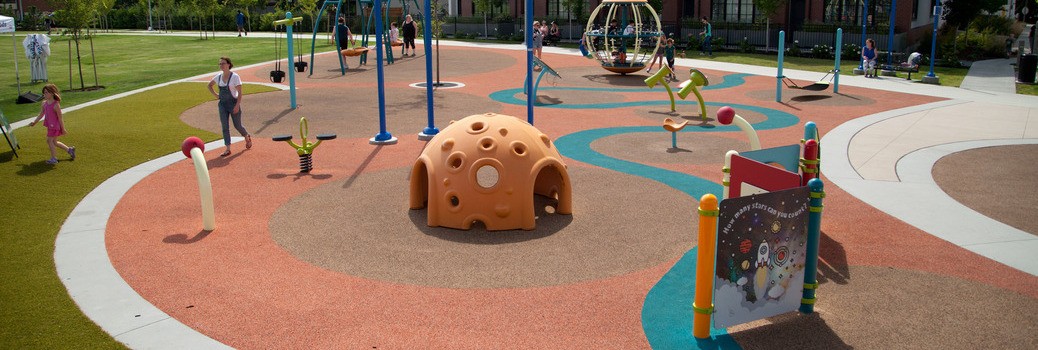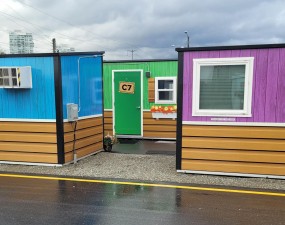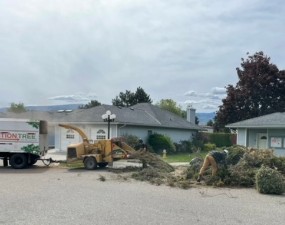Creating safe spaces through design
Topics
By kelowna_webmaster | Nov 20, 2020
What does safety feel like? It’s the sense of calm you have strolling through a well-maintained park, or the discomfort you feel walking down a poorly lit street. Our sense of safety is connected to the environment around us.
A team of City of Kelowna staff, trained in Crime Prevention Through Environmental Design “CPTED”, routinely conducts audits and reviews of City projects, parks, neighbourhoods and new housing with supports locations.
To understand how it works, consider these two neighbourhoods.
Neighbourhood 1 is well lighted, has clear signage, sidewalks, bike lanes and the landscape is well maintained. Neighbourhood 2 has lots of hidden spaces, dark alleys, overgrown trees, graffiti on light poles, no bike paths or sidewalks.
Which neighbourhood would you choose to walk through?
“Option 2, sounds pretty inviting if you’re someone looking to commit crime without being seen,” said Colleen Cornock, Crime Prevention Supervisor for the City of Kelowna. “When we apply CPTED principles, we are looking at what modifications could be made to reduce opportunities for crime.”
“As a starting point, we review existing landscaping, lighting, signage to amenities and services and how people move in the space,” said Cornock. “We want to create opportunities for community building while designing out opportunities for illegal activity. Our ultimate goal is to have community ownership of the space.”
In a park that becomes known for negative activity, installing additional lighting may attract more people to exercise or play in the park. Dog parks, for example, increase community use because dog owners tend to use the space throughout the day.
As for the graffiti –wrapping utility boxes with pictures or painting murals on a wall help minimize graffiti.
For some new developments, including new housing with supports projects, Cornock and her team apply the CPTED model in the development phase, before construction begins. For two recently constructed housing with support buildings, Samuel Place and Stephen Village, this meant increasing the amount of lighting, to ensure high visibility of the outdoor areas.
While most of the work is focused on public spaces, Colleen offers tips for homeowners to limit the opportunities for crime on their property.
- Create spaces that show pride – ensure you don’t have overgrown landscaping, keep trash off your lawn, stay on top of required repairs
- Have a visible street address – so your home is easy to locate in an emergency
- Ensure all exterior lights are working
- Keep your garage and car doors locked
- Don’t leave ladders or tools outside that can be used for break and enters
- Lock second floor windows and doors when not at home
Applying the principles
In late October, 22 staff from a variety of departments in the City and RCMP, including Crime Prevention, Bylaw, Active Living and Culture, Civic Operations, Parks, Parks Planning and the RCMP Community Safety Unit participated in facilitated CPTED training applicable to their work to further improve community safety and well-being. Rethink Urban delivered the full spectrum workshop with an environmental design expert with international experience leading the training.
They visited locations that have experienced crime and social disorder issues, to apply classroom theory and content and prepare recommendations to report back to a CPTED review panel on the final day of the training.
City Council has established priorities that include reducing crime and ensuring residents feel safe. This training will create a cross-organizational CPTED Team that will triple the City’s capacity to provide CPTED audits in troubled areas and support the development and application of CPTED expertise in early planning.
Learn more about crime prevention at kelowna.ca > crime prevention









